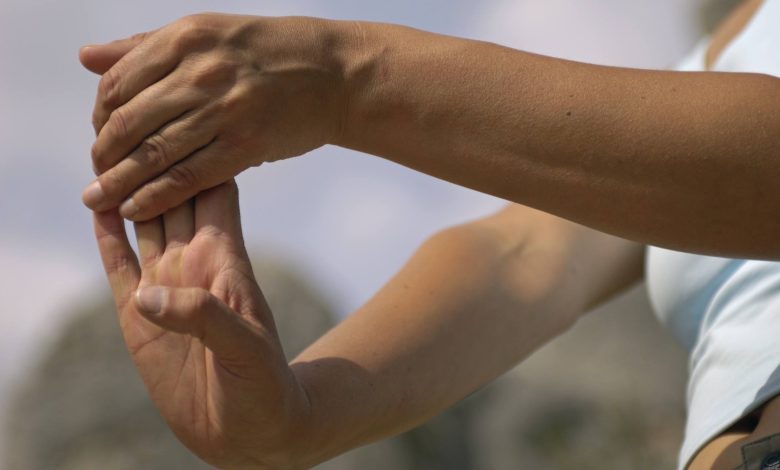Get the Right Answer for Your Queries About Dupuytren’s Contracture

Dupuytren’s contracture is a chronic hand condition that can cripple them. This disease is named after the military surgeon and French anatomist who first operated on it in the early nineteenth century, Guillaume Dupuytren.
We have answered frequently asked questions about Dupuytren’s Contracture or Viking Hand.
Q: What is Dupuytren’s disease?
A: Dupuytren’s Contracture is an advanced condition that distresses the tissue below the skin known as fascia. The fascia is accountable for holding the skin of the palm so that it does not slide around while grabbing or gripping an object. The hard scar is laid on the tissue that slowly contracts, leading to bending fingers that are hard to straighten.
Q: What causes Dupuytren’s disease?
A: The cause of Viking Finger Syndrome is still unknown, but there is a hereditary factor. A positive family history, to be specific, plays a vital role in the progression of this condition. Other factors that make this disease even worse are smoking, extreme alcohol consumption, diabetes, epilepsy, and some antiepileptic medicine.
Q: How Dupuytren’s disease is diagnosed?
A: Dupuytren’s disease is examined by physical examination. It generally begins with the node formation in the palm below the firmed skin and is initially painful. This may be related to the pits near the nodules that grow after this.
As this disease develops, the nodules become cords below the finger and palm that begin to shrink, causing the fingers to bend toward the palm.
Patients also develop nodules on the dorsal knuckles known as the knuckle pads of Garrod or ailment elsewhere, like in the feet or penis.
Q: Who gets Dupuytren’s disease?
A: There is a genetic factor that affects mainly people of Northern European descent, which is why this disease is also known as the Viking Finger Syndrome, as it is thought to originate in people of Scandinavian ancestry after that spreading from there. But it is reported in all races. A study has shown that it affects men more often than women and generally starts after 40.
Q: What happens if Dupuytren’s disease stays untreated?
A: The fingers gradually contract and bend, leading to incapability to stretch the fingers and limiting hand function.
Q: Is there a treatment for Dupuytren’s disease?
A: There is no proper cure for Dupuytren’s disease, but many non-surgical and surgical treatments are available to eliminate or soften the cords, causing restricting contractures.
Q: What is Dupuytren’s contracture?
A: When the hand cord develops by Dupuytren’s disease leading to a bending of fingers that no longer be fully straightened, the condition is called Dupuytren’s Contracture or Viking Hand.
Q: What are the risk factors for Viking Finger Syndrome?
A: The risk for Dupuytren’s contracture is the same as for the disease; however, a family history, early onset of the disease, affect in both right and left hand, related to the disease in the penis, knuckle pads, or feet increases the risk of growth of contractures.
A history of diabetes, extreme alcohol consumption, smoking, epilepsy, and some antiepileptic medicines also increases the risk of contractures.
Q: How does Viking Finger Syndrome impact a person’s life?
A: The struggle of opening your fingers makes it difficult to hold any objects. The fingers also get jammed and hurt as the person tries to hold the object or puts their hand in the pocket.
Q: Can Dupuytren’s contracture affect any finger?
A: Yes, but it most frequently affects the ring finger followed by the pinky finger.
Q: How is Dupuytren’s contracture treated?
A: Usually, Dupuytren’s contracture is treated with home treatment to get rid of this diseased tissue and, thus, correct the contracture.
Though if you choose surgery is done on an outpatient basis, the recovery is strenuous for some patients and nearly always requires a six-week course of splinting and hand therapy.
Recently, with the secretion of an enzyme known as Xiaflex, which is directly injected into the cords to dissolve the affected cords, and then 24 to 96 hours after using a bent finger under the local anesthesia, breaking the cords altering the Dupuytren’s Contracture and Vikings Disease.
Another popular method is a slightly invasive surgical treatment known as needle aponeurotomy, where a needle is used to break the cord under local anesthesia.
Q: Which Dupuytren’s contracture treatment is better: non-surgical or surgical?
A: The results for surgery as compared to enzyme injection are equal. The long-term results are not yet available. The disease doesn’t have an exact cure and, thus, the reappearance of the disease in at least 20% of patients is seen.
Q: What are the advantages of Dupuytren’s contracture treatment?
A: The enzyme treatment known as Xiaflex treats Dupuytren’s Contracture or Viking Hand disorder non-surgically. You can also try different home remedies that help ease the uncomfortable symptoms of this disease. Including:
Reducing Palm Pressure
Trying Exercises
Utilizing Massage
Eating a Healthy Diet
Quitting Smoking and Reduce Drinking
Taking Supplements
Don’t allow this disease to get in between your daily chores. Instead, start practicing different remedies to avoid severe consequences.




